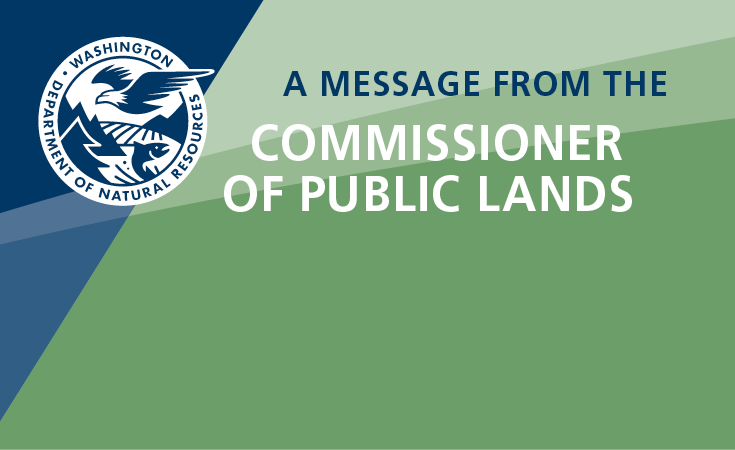Forest Landowner Fish Passage Initiative (FloFish)
Interested in a free fish passage assessment for a stream crossing on your property?
Complete this landowner survey to see if you are eligible for DNR’s fish passage programs. Even if you’re not sure whether your stream crossing is a barrier, we want to hear from you!
Priority fish passage barriers may be eligible for replacement with a new culvert or bridge at no financial cost to the landowner.
Washington’s iconic salmon need access to rivers and streams to spawn and lay their eggs and complete their epic journey from freshwater to the ocean and back again. However, fish passage barriers caused by undersized, perched or failing culverts and other infrastructure can block access to important spawning habitat upstream. Fish passage can also be impaired by dams, levees, or other structures. Stream crossings that block fish passage also often result in increased flooding, erosion, and other headaches for landowners.
Many culverts installed over the last several decades were not designed to allow fish passage. Culverts can be a full or partial barrier if they meet any of these conditions:
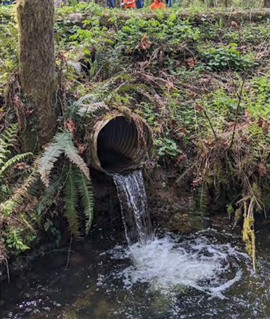
-
Velocity barrier: Size or position of culvert results in water flows that are too fast for fish to swim upstream.
-
Water depth barrier: Water depths in the culvert or in the pool below it are too shallow for fish to swim safely.
-
Perched barrier: Culvert is too high for salmon to jump into.
-
Habitat barrier: Culverts that are too long, dark, or lack any habitat features like sediment can be a deterrent to fish passage.
Cities, counties, state agencies, tribes, and other salmon recovery partners are hard at work to identify and address fish passage barriers all around the region. But what about barriers that may exist on driveways and other private roads? Much is unknown about the scope of the problem for fish bearing streams that cross privately owned roads, driveways, and trails.
DNR’s Snohomish Watershed Resilience Action Plan (WRAP) is a first-of-its-kind strategic approach to work across the landscape from “tree to sea” with diverse partners to promote salmon recovery and watershed health. As part of this effort, DNR is stepping in to help landowners in the Snohomish River Basin identify and address fish passage barriers on their lands.
Given that DNR’s Small Forest Landowner Office works with private forest landowners to promote stewardship of forested lands throughout Washington state, the agency is uniquely suited to engage forest landowners in this region-wide effort to promote habitat accessibility for salmon. This work will begin summer 2024 in parts of King and Snohomish counties as part of our Watershed Resilience Action Plan for the Snohomish Watershed.
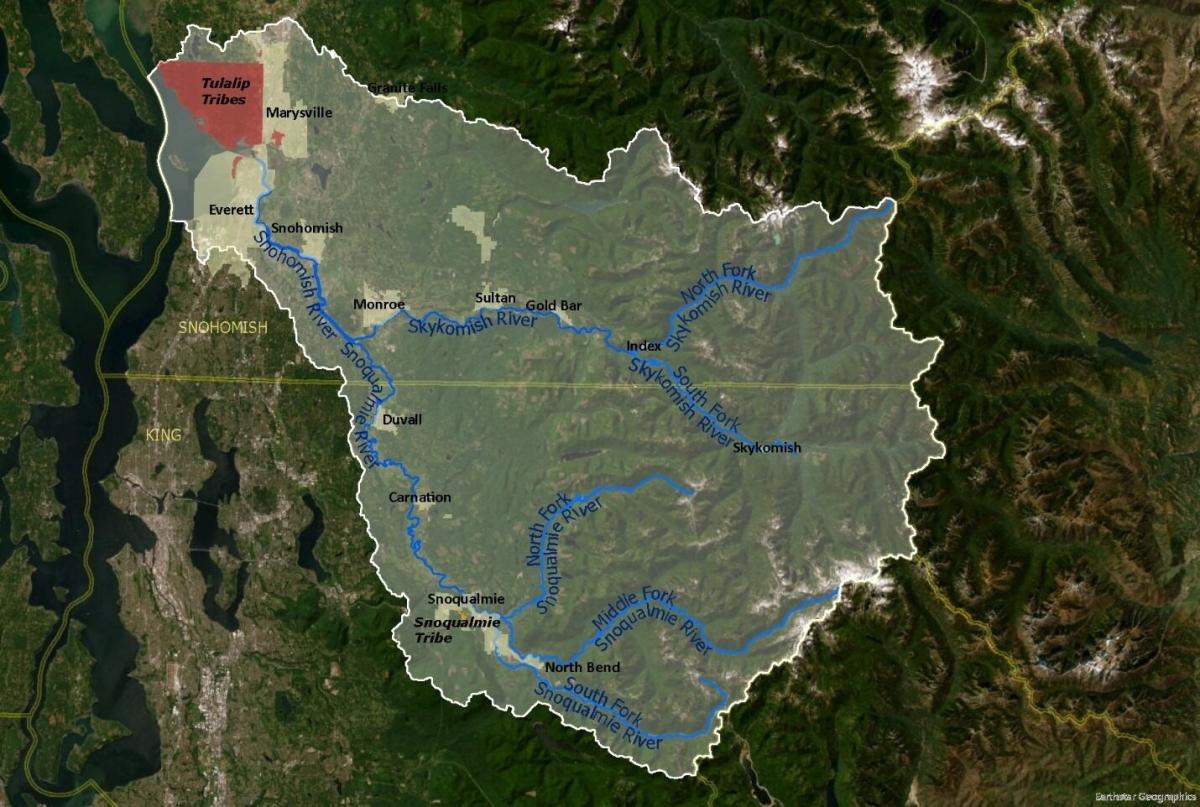
If you are a landowner living in the Snohomish Watershed (click here to find out) and you have forested acreage and a stream on your property, you may be eligible to join in a region-wide salmon recovery effort by participating in our Forest Landowner Fish Passage Barrier Initiative (FloFish).
Help restore valuable fish habitat on your land
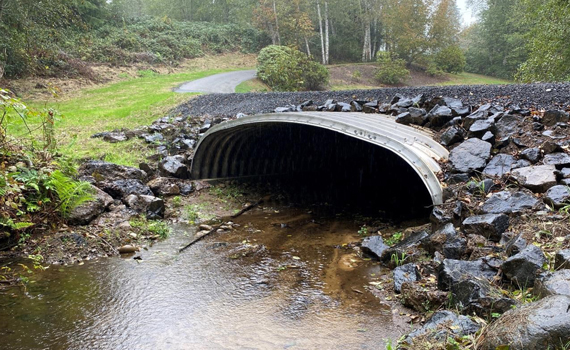
A properly designed culvert allows high water and fish to pass easily
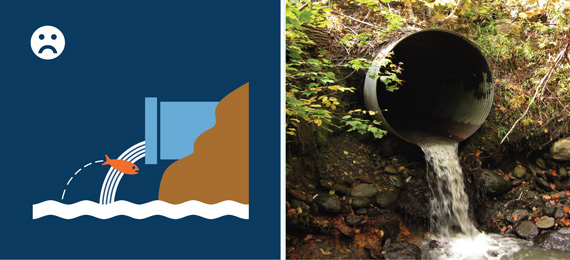
The culvert above is too high for fish to jump into. Stream crossings that are blocked, too small, or poorly positioned can cause property damage and prevent fish passage. Even a single barrier can keep fish from reaching many miles of upstream spawning and rearing habitat.
Data about your stream will help build a collective understanding of barriers to fish passage in the Snohomish Basin and help advance salmon recovery.
We want to hear from you! Please click here to fill out a short contact form, and our team will reach out with more information. If you prefer, you can contact us directly at flofish@dnr.wa.gov or (360) 972-4848.
For more information on fish passage work around the region, check out these resources:


